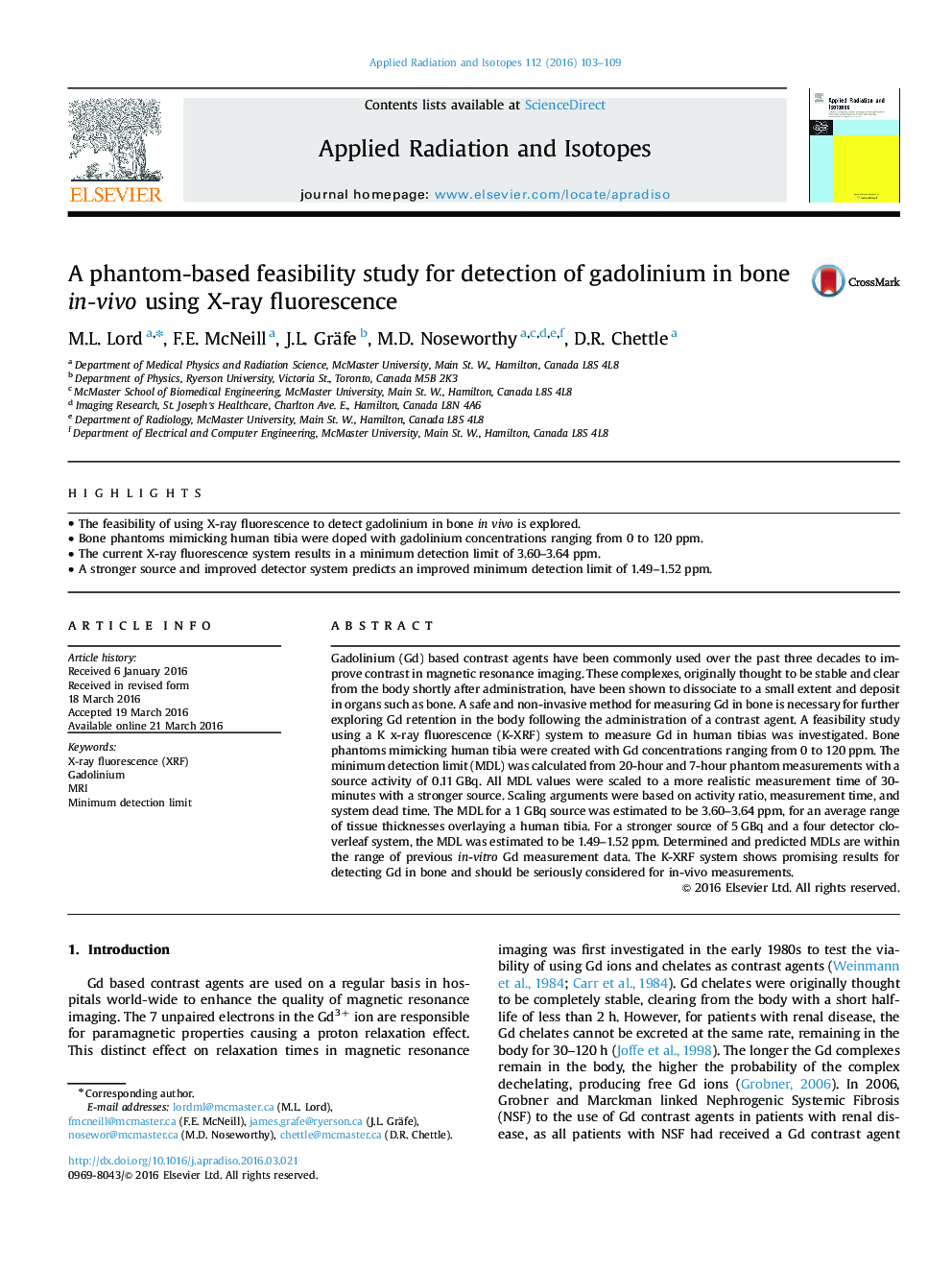| Article ID | Journal | Published Year | Pages | File Type |
|---|---|---|---|---|
| 1878915 | Applied Radiation and Isotopes | 2016 | 7 Pages |
•The feasibility of using X-ray fluorescence to detect gadolinium in bone in vivo is explored.•Bone phantoms mimicking human tibia were doped with gadolinium concentrations ranging from 0 to 120 ppm.•The current X-ray fluorescence system results in a minimum detection limit of 3.60–3.64 ppm.•A stronger source and improved detector system predicts an improved minimum detection limit of 1.49–1.52 ppm.
Gadolinium (Gd) based contrast agents have been commonly used over the past three decades to improve contrast in magnetic resonance imaging. These complexes, originally thought to be stable and clear from the body shortly after administration, have been shown to dissociate to a small extent and deposit in organs such as bone. A safe and non-invasive method for measuring Gd in bone is necessary for further exploring Gd retention in the body following the administration of a contrast agent. A feasibility study using a K x-ray fluorescence (K-XRF) system to measure Gd in human tibias was investigated. Bone phantoms mimicking human tibia were created with Gd concentrations ranging from 0 to 120 ppm. The minimum detection limit (MDL) was calculated from 20-hour and 7-hour phantom measurements with a source activity of 0.11 GBq. All MDL values were scaled to a more realistic measurement time of 30-minutes with a stronger source. Scaling arguments were based on activity ratio, measurement time, and system dead time. The MDL for a 1 GBq source was estimated to be 3.60–3.64 ppm, for an average range of tissue thicknesses overlaying a human tibia. For a stronger source of 5 GBq and a four detector cloverleaf system, the MDL was estimated to be 1.49–1.52 ppm. Determined and predicted MDLs are within the range of previous in-vitro Gd measurement data. The K-XRF system shows promising results for detecting Gd in bone and should be seriously considered for in-vivo measurements.
